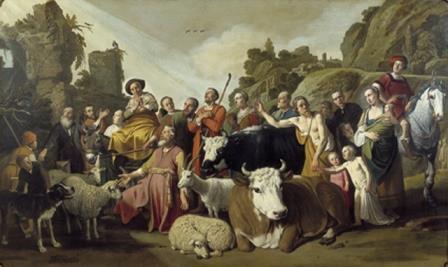Recommendation
In a letter dated 8 May 2015 the Minister of Education, Culture and Science (hereinafter referred to as the Minister) asked the Restitutions Committee (hereinafter referred to as the Committee) for advice about the application for restitution of 10 March 2015 from XX (hereinafter referred to as the Applicant) for restitution of a winter scene by J. Griffier I and the painting God Appears to Abraham at Shechem by C.N. Moeyaert. Both works are part of the Netherlands Art Property Collection (hereinafter referred to as the NK collection). The painting by Griffier I is registered under number NK 2121, but is missing. The work by Moeyaert is registered under number NK 3401 and is currently in the custody of Stichting Museum Catharijneconvent.
